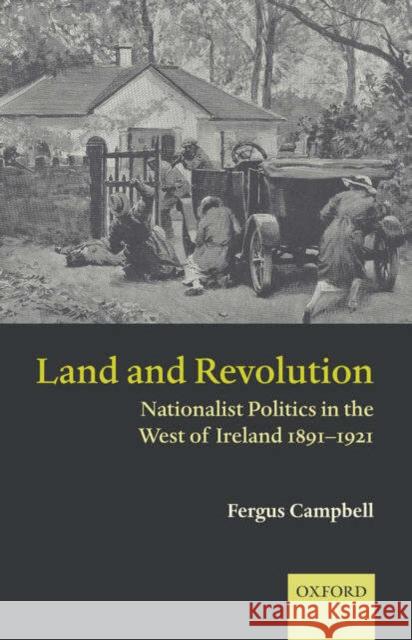Land and Revolution: Nationalist Politics in the West of Ireland 1891-1921 » książka
Land and Revolution: Nationalist Politics in the West of Ireland 1891-1921
ISBN-13: 9780199273249 / Angielski / Twarda / 2005 / 376 str.
Land and Revolution: Nationalist Politics in the West of Ireland 1891-1921
ISBN-13: 9780199273249 / Angielski / Twarda / 2005 / 376 str.
(netto: 300,87 VAT: 5%)
Najniższa cena z 30 dni: 302,19 zł
ok. 30 dni roboczych
Bez gwarancji dostawy przed świętami
Darmowa dostawa!
In the 1890s, most of the inhabitants of the west of Ireland experienced great poverty and hardship, living - as they did - on farms that were too small to provide them with a reasonable standard of living. By 1921, however, the living conditions of many of them had been transformed by a series of Land Acts that revolutionized the system of land holding in Ireland. This book examines agrarian conflict in Ireland during the neglected period between the death of Parnell (1891) and the signing of the Anglo-Irish Treaty (1921), and demonstrates that land reform was often introduced in response to popular protest.
Whereas earlier accounts have tended to examine Irish political history from the perspective of British governments or nationalist leaders, this book breaks new ground by providing an account of popular political activity in late nineteenth- and twentieth-century Ireland. For the first time, the social background, ideas, and activities of grass-roots political activists are systematically explored, as are the class conflicts that threatened to fragment the unity of the nationalist movement in rural communities. By reinserting the activism of ordinary people into the broader historical record, Dr Campbell suggests new interpretations of a number of critical developments including the failure of 'constructive unionism', the origins of Sinn Fein, and the nature and dynamics of the Irish revolution (1916-23). Using the recently released archives of the Bureau of Military History, the story of the war of independence in the western county of Galway is told in the words of both the Irish Republican Army and its enemies.
Land and Revolution transforms our understanding of late nineteenth- and early twentieth-century Irish history, and also contributes to comparative studies of nationalism, revolution, and agrarian protest.
"











